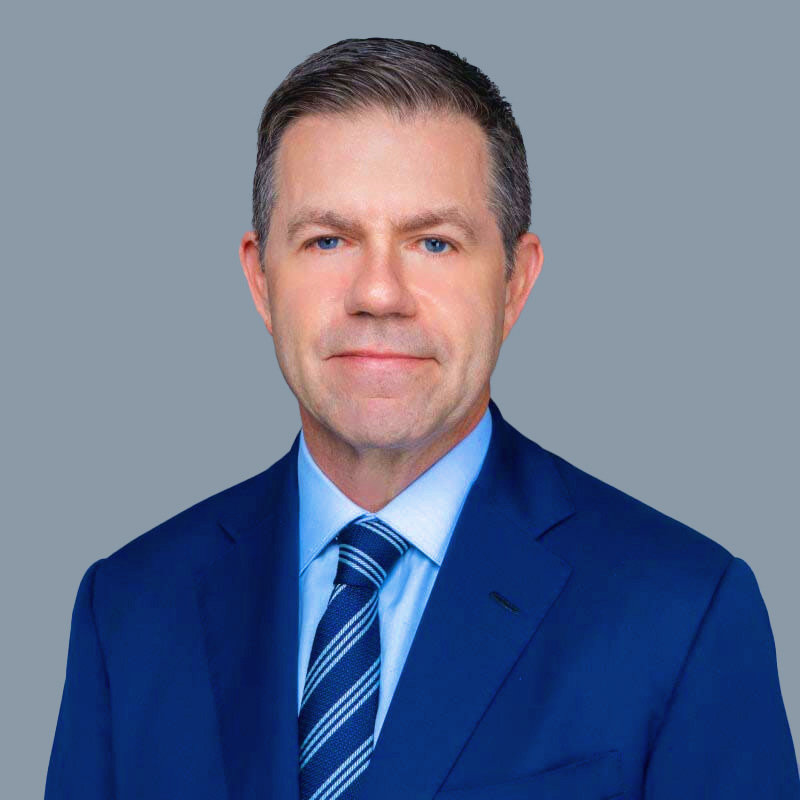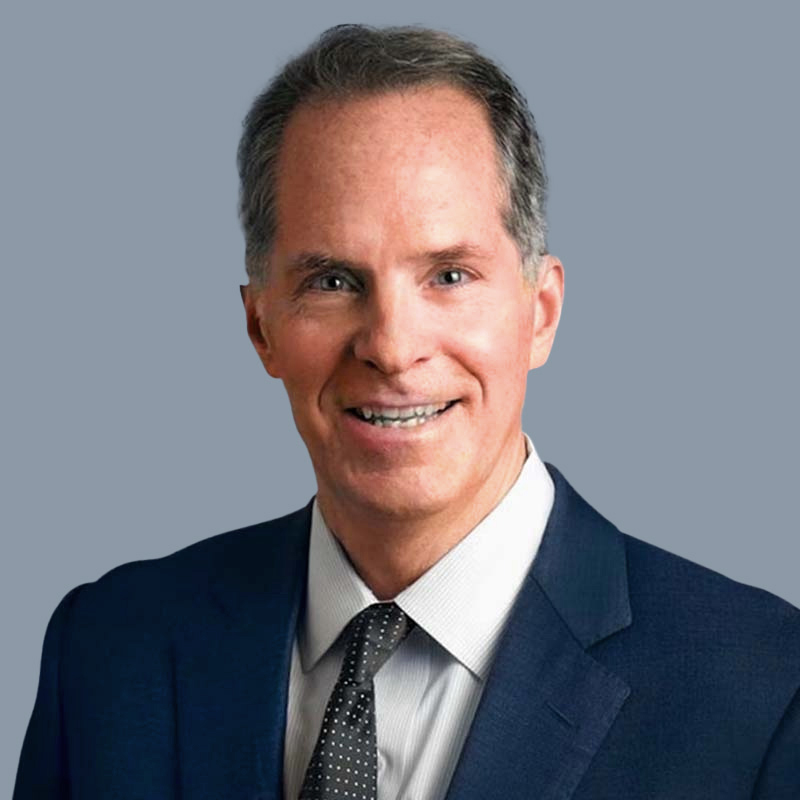Return to Work: How Leaders Can Capitalize on Shifting Norms to Bring
Value to Their Organizations


Executive Perspectives
In March 2020, literally overnight, the COVID-19 pandemic unleashed radical changes to the way we approach work. Add to this, the disruptions in global supply chains, changes to global trade, political polarization, geopolitical events and a persistently competitive labor market to the mix, and work looks very different several years on. We now have a workplace few would have foreseen just a few years ago. Geographically dispersed workforces, new or repurposed digital tools to connect and conduct business, and new benefits and new hours continue to reshape the world of work every day.
Because of these shifts, business leaders are now grappling with new questions: What does it mean to be a remote or hybrid company? How do you build culture in a hybrid office? Most importantly, what will the norm be for work environments in the next decade and which type of leaders will be best suited to those modern work environments?
While many organizations have struggled to find their way forward, those who have been most successful at navigating these disruptions, and who will continue to enjoy a competitive advantage, are the organizations with strong leadership, robust corporate cultures and those that maximize the capabilities of managers. Notably, the most successful organizations will understand that managers and leaders play different roles. A good manager pursues the success of the organization by focusing on planning, process, and resources. Leadership may include these activities but it is more nuanced and centered on influence rather than authority.

As business leaders make decisions about the future of their workforces, they must consider where the workforce sits, how employees work and the tradeoffs they are willing to accept to achieve their mission.
- Joe Moglia | Former CEO of TD Ameritrade
Management and leadership are neither mutually exclusive nor mutually assured. The contexts in which management and leadership are applied inform their impact on a firm’s long-term success. Good managers have always been in greater supply than good leaders, and it is especially rare to find both roles well-executed in a single person.
With these shifts in mind, we find ourselves in a time when the way we work necessitates a reevaluation of the relative roles of managers and leaders at every level of an organization.
The New Time and Place of Work
Now that the dust has settled on the pandemic, so too have some questions about the future of remote work. However, not all businesses are coming to the same conclusion. Some companies, like Slack, Coinbase and 3M, have adopted fully remote options for their workforce. Others, like Goldman Sachs and Netflix, want their employees back in the office full-time as a way to maintain culture. This range of opinions on what constitutes the workplace has sparked debate and tensions between employees and employers.
For example, many companies are walking back the pandemic-induced change that forced them out of their offices just a few years ago. Amazon and others are now putting pressure on individuals to return to the office. And workers previously empowered by a hot labor market may be starting to find themselves in less of a position of leverage as the dangers of a recession loom and certain industries are hit hard by layoffs.
On the other end of the spectrum, the idea of a five-day, in-person workweek feels to many like an increasingly outdated way of doing business. Some companies that have sought a total return to the office have been met with resistance from workers. Especially given the explosion of productivity and collaboration tools like Zoom, Slack, and Miro, geographically dispersed workforces have in many instances been more productive than in-person teams. Experiments with four-day work weeks also call into question conventional knowledge about what work looks like and how productivity is achieved.
As remote work became a requirement for many roles in March 2020, innovation rapidly followed, with better remote tools, policies and practices to support the work-from-home necessity. For many companies, productivity increased as workers traded their commute time for an extra period of work.1 Employee satisfaction grew as workers discovered “extra” time for home and personal tasks that was previously spent commuting.2
As business leaders make decisions about the future of their workforces, they must consider where the workforce sits, how employees work and the tradeoffs they are willing to accept to achieve their mission. All these factors point to the world being at an inflection point from an era of management dominance to one of strong leadership to recruit, motivate and retain the workforce. Leadership will increasingly become a differentiator for all organizations that want to survive in the new economy.
Strong Leaders Build Strong Corporate Cultures
Culture building for a distributed workforce has remained a persistent concern among executives post-pandemic. Many corporate cultures that were already weak before the pandemic now face serious problems with burnout, employee turnover and quiet quitting.
Pre-pandemic, team cohesion was often maintained through a status quo of managerial oversight. When suddenly freed of the physical constraints of the office, many workers quickly realized there was little remaining to inspire or motivate them. Companies that sought to continue the old style of management by implementing invasive employee monitoring technologies soon found that such approaches backfired, often measuring or incentivizing the wrong activities and bruising morale.3
On the other side, some organizations have successfully maintained their culture in the new remote and hybrid work environment. These companies tend to share three traits:
- They have empowered, capable, trusted leaders throughout the organization. Whether formal or informal leaders these are the people whom employees trust to take responsibility for problems and solutions, who communicate clearly, who delegate well and who understand how to motivate, inspire and reward the workforce effectively.
- They were already thinking strategically about the future for their company and employees before the changes brought by the pandemic. While a typical manager may understand how to coach a team on a specific process, it takes a leader’s vision to see problems before they arise, inspire their teams and managers to innovate, and encourage employees to embrace changes and proactively problem-solve to devise a new process.
- These organizations also created a clear set of shared values of personal responsibility, respect and a willingness to recognize the consequences of actions, regardless of where they work. These values are particularly important during times of crises and transition when lesser organizations and leaders might look for externalities on which to blame failures.
Deloitte noted in a recent report that “organizations’ success, or in some cases survival, hinged on workers’ ability to adapt and remain healthy and productive.”4 This idea translated directly to a focus on “mental health and well-being, talent retention and development, hybrid work solutions and the future of the workplace.” Companies with effective leaders were equipped to understand the needs of their teams and address those needs more nimbly. Management-oriented organizations struggled to adjust calcified policies and processes and to inspire people to take on new challenges under already incredibly stressful circumstances.
In the last few years, many employees experienced burnout as there was no separation between the physical workspace and their home life.5 Others experienced disruptions with childcare and found themselves trying to be caregivers while working, which led to additional stresses.6 There’s a reason why WTW recently reported that two-thirds of major companies intend to focus on employee mental health and wellness as a healthcare priority over the next three years: It’s a way of taking responsibility for the performance of the team.7
To use a football analogy, coaches must understand players’ abilities, weaknesses, strengths and opportunities for improvement — and be able to tailor leadership to team and player needs. They need to focus on fundamentals where necessary and devise game plans that account for the reality of the team and the opponent. Just as players are expected to give 100% and take responsibility for their performance on the field, coaches must take responsibility for the performance of their players.
Building the Trust Factor
In my experience, people primarily go the extra yard for their organization out of a sense of trust: trust that their leaders have prepared them for the work they are expected to perform; trust that they’re part of a high-functioning team who has their back; trust that their leaders are competent. Trust is shared between leaders and those they are leading and must be built over time.
Developing trust can be rooted in a common mission. People want to be inspired and they look to their leaders to provide that inspiration. A common vision and meaningful mission provide a guiding purpose for the development of a workforce that is willing to elevate the mission over themselves.
The organization succeeds or fails as a team, which means no team member can be left behind. Even weaker performers must feel as much a part of the organization as the proverbial rock stars. Leaders must build a climate in which everyone learns to rely on each other for personal and organizational success.
Ultimately, good leaders should strive for their employees to have the skills and confidence necessary to step up into their boss’ role should the circumstances demand. Training, personal and professional development and mentorship programs all demonstrate an investment in the success of both your organization and the individuals who comprise it. The best organizations actively invest in such opportunities and enjoy returns in the form of recruiting and retention of talent, as well as employee loyalty. While the methods of these activities have shifted in recent years, the spirit remains the same.
Another area that has become even more challenging post-pandemic has been workplace distractions. Many employees feel “always on” which can lead to burnout.8 It also means being accountable to numerous tools and requests that can feel distracting from the tasks at hand (Slack, email, Zoom calls). Employees, even remote ones, can also have distracting concerns over professional growth and advancement. Effective leaders remove unnecessary distractions from the workplace, providing their teams with much-needed time to focus on the mission.
Strong leaders use mistakes as developmental opportunities to make their people and organization better. Good organizations also take chances and allow their people to stumble without falling. If workers know leadership is in their corner and there is mutual trust, they will take smart risks to benefit their team.
Changing Environments, Changing Skillsets
Leaders of the most effective teams push authority down to the lowest level. Research has shown that our judgment diminishes with each decision we make through the course of a day.9 Leaders who reserve all decision-making for themselves are not only fostering a culture of mistrust, but they also weaken the quality of those decisions they make.
I have often found that unempowered workers are hesitant to exercise authority when it’s provided. Leaders must create a climate where employees understand that they are expected to make routine decisions in their areas of expertise.
Communicating actionable guidance on your intended outcomes helps ensure that day-to-day functioning stays on track, no matter who is making decisions. Clearly communicating intent, including purpose, key tasks, and the desired end state, is one of the most important skills for leaders to master. Clear intent is what links an organization’s mission, its operating model, and daily activities of the team. It’s what allows the best organizations to operate like well-oiled machines while freeing leaders to focus on strategic thinking.
While leaders and leadership are highly contextual, some traits that have proven critical in the last few years and will be crucial for cultures staying remote in the future include:
Autonomy: The best leaders empower their teams to function just as seamlessly in the leader’s absence as presence. That means leaders provide clear guidance to enable teams to do their jobs as they’ve been prepared to and have the discipline to let them.
Humility: Personal ego is the great killer of culture and trust. Teams and leaders must trust each other to perform their roles to accomplish the mission in alignment with your stated intent. Even if the tactical execution is different than you expect, you might just be surprised by the value their unique solutions bring to your organization’s bottom line.
Servant leadership: Reminding your team that you’re in charge will not engender trust or respect. A leader who serves their team, rewards success and owns failure not only models the ethos of putting mission over self but builds a depth of respect that no title will ever convey.
This triad of authority, expectation, and intent, especially when used in conjunction with autonomy, humility and servant leadership, is a powerful mix that both empowers and motivates teams to achieve defined organizational outcomes. While these values are more challenging to exhibit in remote or hybrid environments, as in football, strong leaders will tailor their execution to the situation at hand to ensure an optimal result.
The 2030 Work “Place”
The decisions companies make when it comes to remote, hybrid or in-person work, flexibility, timing and more are highly contextual. Every company, organization and industry has unique needs. The energy of a trading desk cannot be replicated remotely. Some Wall Street institutions may really need their bankers back in the office full-time. Other companies in other industries probably will not.
Regardless of where employees are or what tools they use to connect, good leadership that promotes strong corporate culture will be effective in reaching across physical boundaries. Strong values of responsibility and respect, coupled with a single standard that applies to all members of the organization, will promulgate a strong culture of trust. These values become infectious and organizations with these sorts of values and leaders will succeed in the long run.
There is no surefire way to know where we will land on remote, hybrid or in-person work, but we do know that the workplace already looks very different from what many senior executives grew up knowing. And that’s a good thing.
In the future, work will be less a place and more of a mission, which will lead to greater risk-taking, more innovation and stronger corporate culture. Companies that can better focus on the mission will win through alignment from top-to-bottom where individual contributors are empowered to do work their way and make smart bets. Practically, that means the days of effective management in the absence of effective leadership are waning. Leadership development will become an increasingly necessary function of corporate development and will require firms to reprioritize resources to invest in building a cadre of trained leaders at all levels of the organization. This takes time, money and effort – but it means a workforce that will drive to a vision no matter where they are.
- 1
Williams, T. WFH saves employees 2 hours a week in commute time. they’re spending it in ways CEOS don’t expect. Fortune. (2023, January 24). Retrieved from https://fortune.com/2023/01/24/worker-productivity-spend-commute-time-working/
- 2
Huijer, H. Remote work is linked to happiness: Study of 12,455 respondents. Tracking Happiness. (2023, January 28). Retrieved from https://www.trackinghappiness.com/remote-work-leads-to-happiness-study/
- 3
Thiel, C., Bonner, J.M., Bush, J., Welsh, D., & Garud, N. Monitoring employees makes them more likely to break rules. Harvard Business Review. (2022, June 27). Retrieved from https://hbr.org/2022/06/monitoring-employees-makes-them-more-likely-to-break-rules
- 4
Deloitte. The Elevated Talent and Culture Agenda in the Boardroom. (2022). Retrieved from https://www2.deloitte.com/content/dam/Deloitte/us/Documents/human-capital/us-the-elevated-talent-and-culture-agenda-in-the-boadroom.pdf
- 5
Flexjobs. FlexJobs, Mental Health America Survey: Mental Health in the Workplace. FlexJobs Job Search Tips and Blog. (2022, December 5). Retrieved from https://www.flexjobs.com/blog/post/flexjobs-mha-mental-health-workplace-pandemic/
- 6
CBS Interactive. Child care disruptions continue for working parents of small children. CBS News. (2023, January 3). Retrieved from https://www.cbsnews.com/news/child-care-covid-working-parents-2023/
- 7
Emerman, E. Employers making employee mental health and wellbeing a top health priority, WTW survey finds. Willis Towers Watson. (2022, October 20). Retrieved from https://www.wtwco.com/en-US/news/2022/10/employers-making-employee-mental-health-and-wellbeing-a-top-health-priority-wtw-survey-finds
- 8
McKinsey & Company. Addressing employee burnout: Are you solving the right problem? (2022, May 27). Retrieved from https://www.mckinsey.com/mhi/our-insights/addressing-employee-burnout-are-you-solving-the-right-problem
- 9
Pignatiello, G. A., Martin, R. J., & Hickman, R. L. Decision fatigue: A conceptual analysis. Journal of Health Psychology. (2018, March 23). Retrieved from https://www.ncbi.nlm.nih.gov/pmc/articles/PMC6119549/
The views and opinions expressed herein are solely those of the individual authors and do not necessarily represent those of The Consello Group. Consello is not responsible for and has not verified for accuracy any of the information contained herein. Any discussion of general market activity, industry or sector trends, or other broad-based economic, market, political or regulatory conditions should not be construed as research or advice and should not be relied upon. In addition, nothing in these materials constitutes a guarantee, projection or prediction of future events or results.























